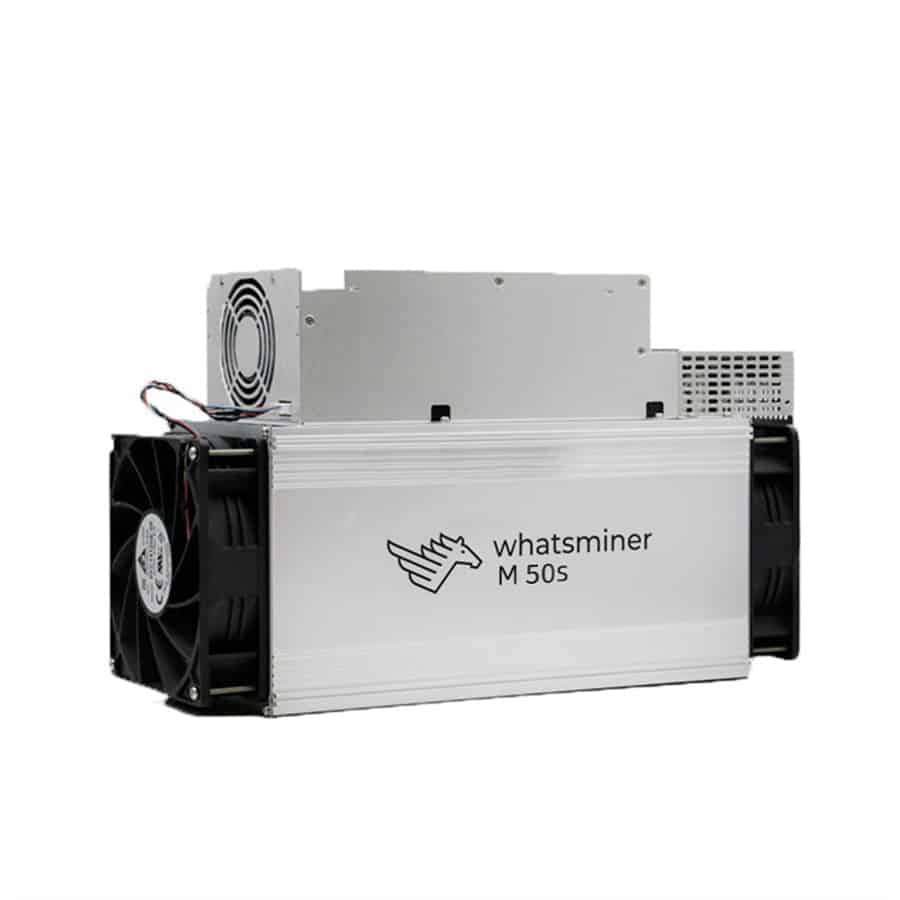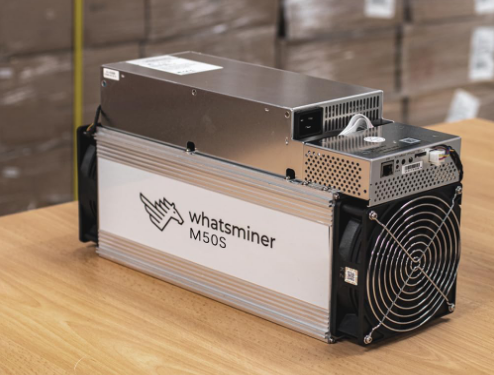WhatsMiner M50S maintenance and repair guide
WhatsMiner M50S Maintenance and Repair Guide
The WhatsMiner M50S has quickly become a cornerstone of modern cryptocurrency mining operations, offering unparalleled performance and efficiency for SHA-256 algorithm-based cryptocurrencies like Bitcoin (BTC) and Bitcoin Cash (BCH). However, as with any high-performance mining hardware, proper maintenance and timely repairs are essential to ensure longevity and optimal operation. This guide provides a comprehensive overview of maintaining and repairing the WhatsMiner M50S, ensuring that your mining operation remains profitable and efficient.
Understanding the WhatsMiner M50S
Before diving into maintenance and repair, it’s crucial to understand the key features and design elements of the WhatsMiner M50S. Built with cutting-edge 5nm chip technology, this ASIC miner delivers a hashrate of 126TH/s (±5%) while consuming 3276W of power. Its compact design (125mm x 225mm x 425mm) and modular architecture make it suitable for both small-scale and industrial mining setups.
The M50S is designed to operate in diverse environments, with a temperature tolerance range of 5-45°C and humidity levels of 5-95%. Its robust cooling system and durable construction contribute to its reliability, but even the best hardware requires regular care to perform at its peak.

Routine Maintenance: Keeping Your M50S in Top Shape
1. Environmental Monitoring and Control
The M50S is built to handle a wide range of environmental conditions, but maintaining a stable operating environment is critical. Ensure that your mining facility has adequate ventilation and temperature control. Excess heat or humidity can strain the cooling system and reduce the miner’s lifespan.
- *Tip*: Use industrial-grade fans or air conditioning systems to maintain an optimal temperature range of 20-30°C.
2. Dust and Debris Management
Dust accumulation is one of the most common causes of hardware failure in mining operations. Regularly clean the exterior and interior of the M50S to prevent dust from clogging the cooling system or damaging components.
- *How to Clean*: Power off the miner and use compressed air or a soft brush to remove dust from the fans, heat sinks, and other components. Avoid using liquid cleaners, as they can damage sensitive electronics.
3. Fan and Cooling System Inspection
The M50S relies on its cooling system to dissipate heat generated during operation. Periodically check the fans for signs of wear, such as unusual noise or reduced airflow. Replace faulty fans immediately to prevent overheating.
- *Tip*: Keep spare fans on hand to minimize downtime during replacements.
4. Power Supply Checks
The M50S operates within a voltage range of 200-277V. Ensure that your power supply is stable and meets the miner’s requirements. Fluctuations in voltage can damage components or reduce performance.
- *How to Check*: Use a multimeter to measure the voltage output of your power supply. If irregularities are detected, consult an electrician or replace the power supply unit.
5. Firmware Updates
Manufacturers often release firmware updates to optimize performance or address known issues. Regularly check for updates and install them as needed to keep your M50S running efficiently.

- *Tip*: Always back up your settings before performing a firmware update.
Troubleshooting Common Issues
Even with proper maintenance, occasional issues may arise. Here’s how to troubleshoot some common problems with the WhatsMiner M50S:
1. Reduced Hashrate
A sudden drop in hashrate can indicate several issues:
- Overheating: Check the cooling system and ensure proper airflow.
- Dust buildup: Clean the miner thoroughly.
- Firmware issues: Update to the latest firmware version.
2. Overheating
If the M50S is running hotter than usual:
- Verify that all fans are functioning properly.
- Ensure the miner is placed in a well-ventilated area.
- Clean the heat sinks and remove any obstructions to airflow.
3. Noise from Fans
Unusual fan noise often indicates wear or misalignment:
- Inspect the fans for damage or debris.
- Replace worn-out fans with compatible replacements.
4. Failure to Power On
If the miner doesn’t power on:
- Check the power supply and cables for damage.
- Verify that the voltage output matches the miner’s requirements.
- Consult the manufacturer’s support team if the issue persists.
Repairing the WhatsMiner M50S
While routine maintenance can prevent many issues, repairs may be necessary in some cases. The M50S’s modular design simplifies the repair process, but it’s essential to follow best practices to avoid further damage.
1. Replacing Faulty Components
Common components that may require replacement include fans, power supplies, and hash boards. Always use genuine parts purchased from authorized dealers to ensure compatibility and reliability.
- *How to Replace Fans*: Power off the miner, disconnect the faulty fan, and install the new one. Ensure that the connector is securely attached.
2. Addressing Hash Board Failures
Hash board failures can significantly impact performance. If you suspect a faulty hash board:
- Power off the miner and carefully inspect the board for visible damage.
- Clean the board with compressed air to remove dust or debris.
- If the issue persists, replace the hash board with a new one.
3. Power Supply Repairs
Faulty power supplies can cause erratic behavior or complete failure. If you suspect a power supply issue:
- Test the power supply with a multimeter.
- Replace the unit if it fails to deliver the required voltage.
4. Seeking Professional Help
For complex repairs or issues beyond your expertise, contact MicroBT’s support team or an authorized repair center. Attempting to repair sensitive components without proper knowledge can void your warranty or cause further damage.

Maximizing the Lifespan of Your M50S
To get the most out of your WhatsMiner M50S:
- Invest in Preventive Maintenance: Regular cleaning and inspections can prevent costly repairs.
- Monitor Performance: Use mining management software to track hashrate, temperature, and power consumption.
- Keep Spare Parts on Hand: Having spare fans, power supplies, and hash boards can minimize downtime.
- Follow Manufacturer Guidelines: Adhere to MicroBT’s recommendations for operation and maintenance.
Conclusion
The WhatsMiner M50S is a powerful and reliable tool for cryptocurrency mining, but its performance and longevity depend on proper care and maintenance. By following this guide, you can ensure that your M50S operates at peak efficiency, minimizing downtime and maximizing profitability. Whether you’re managing a small mining setup or an industrial-scale operation, investing time and effort into maintenance and repairs will pay dividends in the long run.

With its advanced technology, modular design, and robust construction, the WhatsMiner M50S is a testament to MicroBT’s commitment to quality and innovation. By treating it with the care it deserves, you can unlock its full potential and secure your place in the competitive world of cryptocurrency mining.